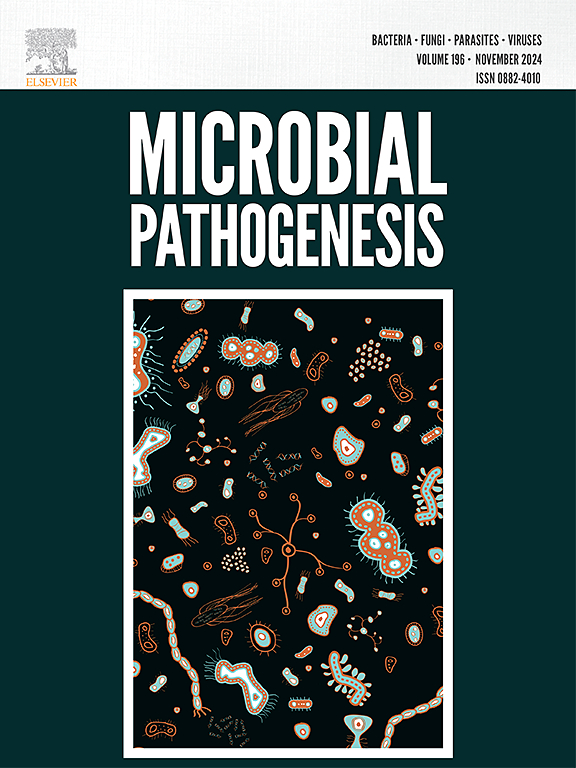纳米银颗粒处理通过减少乳腺炎奶牛中抗生素耐药基因的分离株数量,部分恢复抗生素活性。
IF 3.5
3区 医学
Q3 IMMUNOLOGY
引用次数: 0
摘要
近年来,抗生素的大量使用导致细菌菌株产生耐药性,从而降低了它们在疾病治疗中的有效性。对抗耐药性的方法之一是联合治疗,它包括将抗生素耐药性抑制剂与抗生素联合使用。我们的团队正在开发一种新的方法,包括以AgNPs作为抑制剂的治疗,而不与抗生素联合。本研究在744头患有浆液性乳腺炎的奶牛体内研究了31种抗生素的相关性:(1)用AgNPs治疗奶牛对金黄色葡萄球菌(mecA)、blaGES和大肠杆菌(blaDHA)耐药基因的调节能力,(2)与抗生素药物治疗的结果进行比较。AgNP治疗后获得的数据显示,耐药金黄色葡萄球菌和大肠杆菌分离物数量分别减少40.3%和54.5%,而抗生素治疗后分别增加48.9%和114.9%。经AgNP治疗后,检出耐药基因的分离株比例平均下降22.7%,经抗生素治疗后,检出耐药基因的分离株比例平均上升36.9%。AgNP治疗引起的分离株耐药基因的减少是AgNP对抗细菌耐药的第五种途径,除了我们小组发现的四种途径。这些发现为AgNP治疗抵抗抵抗能力的起源提供了进一步的见解。本文章由计算机程序翻译,如有差异,请以英文原文为准。
Silver nanoparticle treatment partially restores antibiotic activity by reducing the number of isolates with antibiotic-resistant genes in cows with mastitis
In recent years, intensive use of antibiotics has led to bacterial strains developing resistance, which decreases their effectiveness in disease treatments. One of the approaches for combating resistance is combinational therapies, which consist of the use of antibiotic resistance inhibitors in combination with antibiotics. Our group is developing a new approach, consisting of therapy with AgNPs as an inhibitor, without combination with antibiotics. The aim of this work was to study in vivo on 744 cows with serous mastitis and in relation to 31 antibiotics: (1) the capacity of cow therapy with AgNPs to modulate mecA (S. aureus), blaGES and blaDHA (E. coli) resistance genes, and (2) compare the results with those obtained for therapy with antibiotic medicine. The data obtained after AgNP therapy showed a 40.3 % and 54.5 % reduction in antibiotic-resistant S. aureus and E. coli isolate numbers, respectively, whereas they increased by 48.9 % and 114.9 % after antibiotic therapy. The percentage of isolates with detected drug-resistant genes decreased on average by 22.7 % after AgNP treatment, while they increased on average by 36.9 % after antibiotic therapy. This decrease of resistance genes in isolates caused by AgNP therapy is the fifth route of combating bacterial resistance with AgNPs, in addition to four routes revealed by our group. These findings provide further insight into the origins of the capacity of AgNP therapy to combat resistance.
求助全文
通过发布文献求助,成功后即可免费获取论文全文。
去求助
来源期刊

Microbial pathogenesis
医学-免疫学
CiteScore
7.40
自引率
2.60%
发文量
472
审稿时长
56 days
期刊介绍:
Microbial Pathogenesis publishes original contributions and reviews about the molecular and cellular mechanisms of infectious diseases. It covers microbiology, host-pathogen interaction and immunology related to infectious agents, including bacteria, fungi, viruses and protozoa. It also accepts papers in the field of clinical microbiology, with the exception of case reports.
Research Areas Include:
-Pathogenesis
-Virulence factors
-Host susceptibility or resistance
-Immune mechanisms
-Identification, cloning and sequencing of relevant genes
-Genetic studies
-Viruses, prokaryotic organisms and protozoa
-Microbiota
-Systems biology related to infectious diseases
-Targets for vaccine design (pre-clinical studies)
 求助内容:
求助内容: 应助结果提醒方式:
应助结果提醒方式:


